Potrebujeme váš súhlas na využitie jednotlivých dát, aby sa vám okrem iného mohli ukazovať informácie týkajúce sa vašich záujmov. Súhlas udelíte kliknutím na tlačidlo „OK“.
ASTM D6248-98(2012)e1
Standard Test Method for Vinyl and Trans Unsaturation in Polyethylene by Infrared Spectrophotometry (Withdrawn 2021) (Includes all amendments And changes 1/25/2021).
Automaticky preložený názov:
Štandardná skúšobná metóda pre Vinyl a Trans Nenasýtenosť v polyetylénu Infrared Spektrofotometria
NORMA vydaná dňa 1.5.2012
Informácie o norme:
Označenie normy: ASTM D6248-98(2012)e1
Poznámka: NEPLATNÁ
Dátum vydania normy: 1.5.2012
Kód tovaru: NS-34387
Počet strán: 3
Približná hmotnosť: 9 g (0.02 libier)
Krajina: Americká technická norma
Kategória: Technické normy ASTM
Kategórie - podobné normy:
Anotácia textu normy ASTM D6248-98(2012)e1 :
Keywords:
FTIR, infrared spectrophotometry, polyethylene, trans-vinylene unsaturation, vinyl unsaturation, ICS Number Code 83.080.20 (Thermoplastic materials)
Doplňujúce informácie
| Significance and Use | ||||||||||||||
|
There are three types of olefinic groups present in sufficient concentrations to warrant consideration, one or more of that can normally be found in any polyethylene. The three types are trans-vinylene, R-CH=CH-R′, sometimes referred to as trans-internal unsaturation; vinylidene or pendent methylene, RR′C-CH2; and vinyl unsaturation, R-CH=CH2, also referred to as terminal unsaturation. The type and quantity of these groups can influence the chemical and physical properties of the resin. Information concerning their presence can also be used to characterize or identify unknown resins or blends of resins. Additives can interfere with unsaturation measurements. The use is cautioned to determine which additives are present and if there any absorbance bands caused by additive presence that overlap or interfere with unsaturation absorbance bands used in this test method in the range of 1050 to 850 cm–1. If overlapping bands occur, the method is not applicable. Interference fringes resulting from smooth sample surfaces can cause measurement errors. This test method requires the use of aluminum foil in the compression molding of samples to provide an adequately rough surface to minimize interference fringes. |
||||||||||||||
| 1. Scope | ||||||||||||||
|
1.1 This test method covers most types of polyethylene, those ethylene plastics consisting of ethylene and α-olefin comonomers longer than propylene, and blends of the above in any ratio. 1.2 The values stated in SI units are to be regarded as the standard. 1.3 This standard does not purport to address all of the safety concerns, if any, associated with its use. It is the responsibility of the user of this standard to establish appropriate safety and health practices and determine the applicability of regulatory limitations prior to use. Specific hazards statements are given in Section 8. Note 1—There is no known ISO equivalent for this standard. |
||||||||||||||
| 2. Referenced Documents | ||||||||||||||
|
Podobné normy:
Historická
1.5.2011
Historická
1.4.2010
Historická
1.4.2006
Historická
1.12.2011
Historická
1.4.2012
Historická
10.9.2002



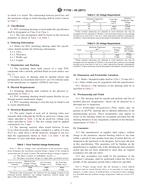 ASTM F1742-03(2011)..
ASTM F1742-03(2011)..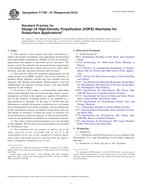 ASTM F1759-97(2010)..
ASTM F1759-97(2010)..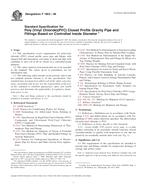 ASTM F1803-06
ASTM F1803-06 ASTM F1855-00(2011)..
ASTM F1855-00(2011)..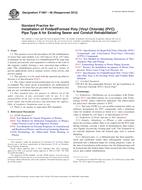 ASTM F1867-06(2012)..
ASTM F1867-06(2012)..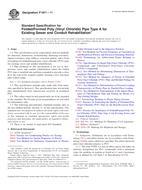 ASTM F1871-11
ASTM F1871-11
 Cookies
Cookies
